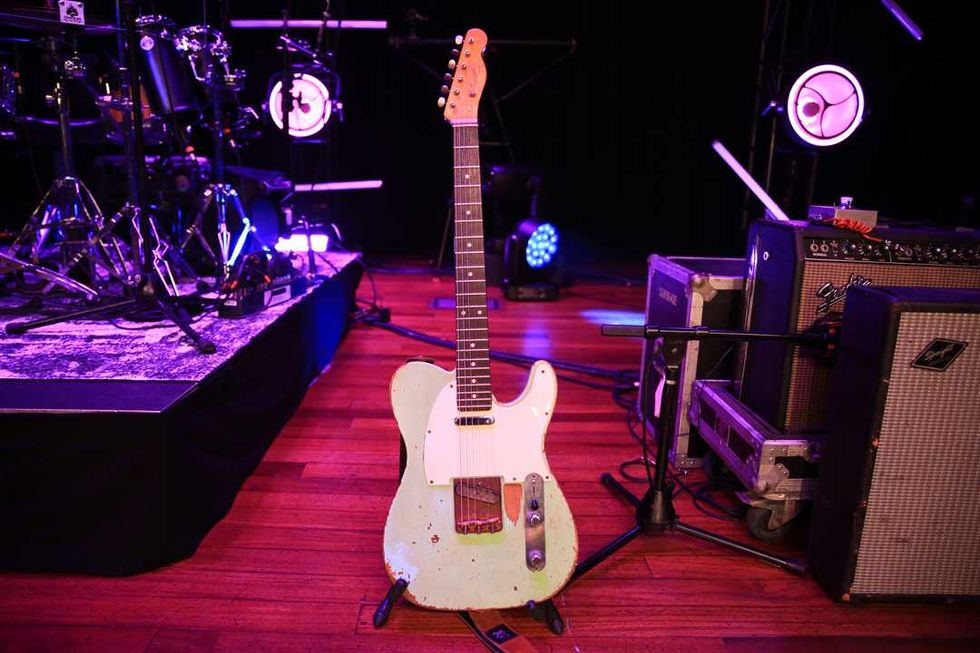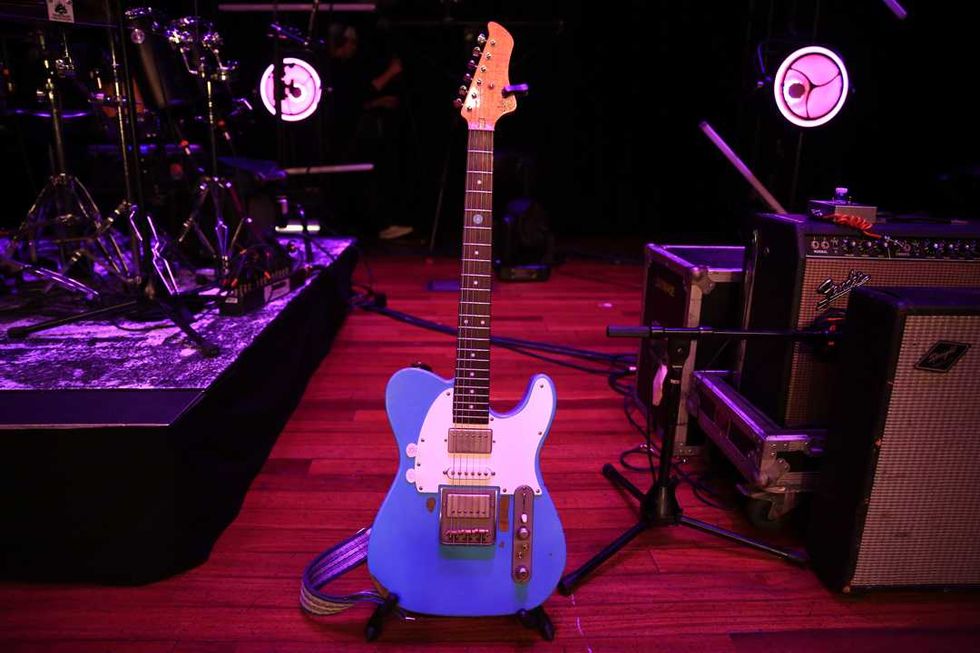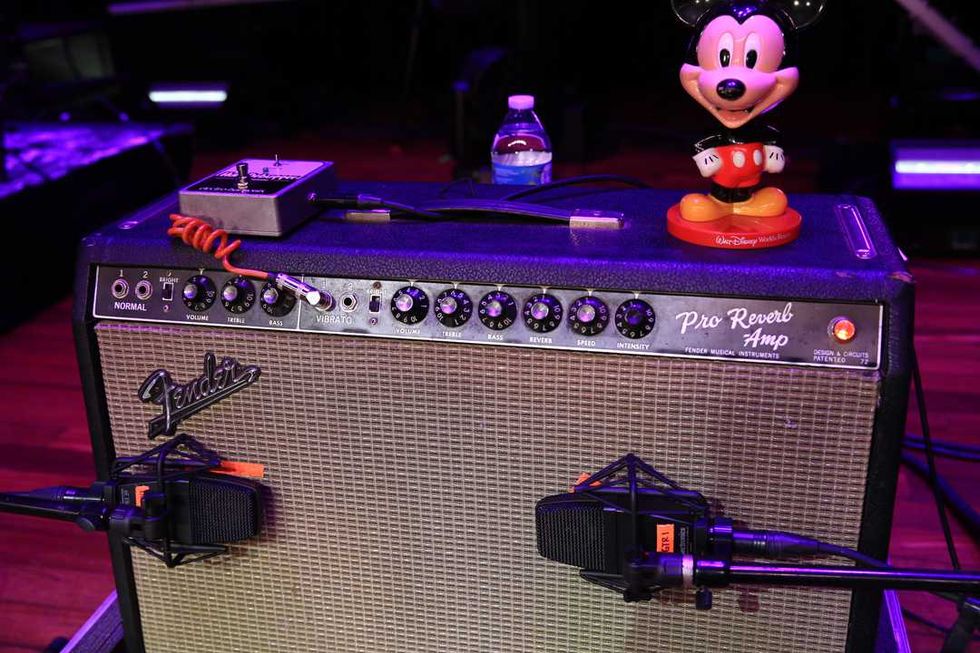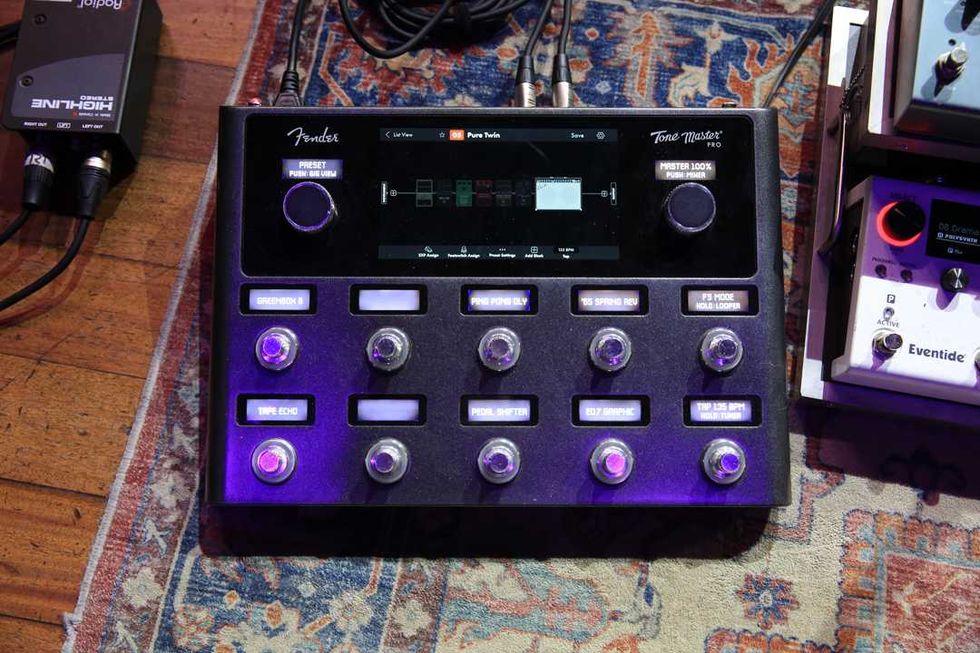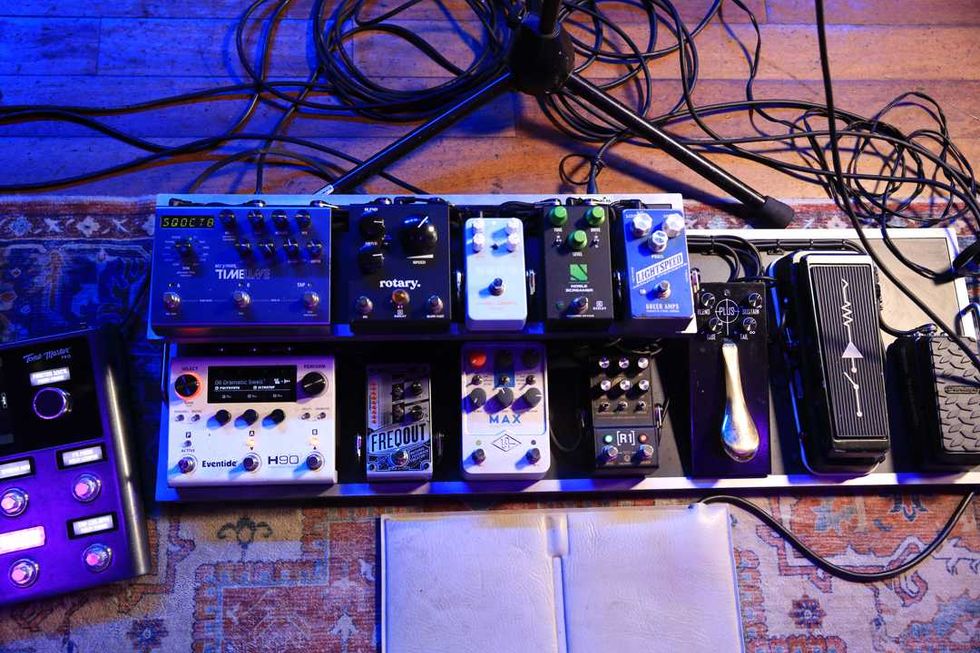Describing an uncommon sensory experience sometimes demands unorthodox analogies. Take craft beer critics: They won’t hesitate to describe an India Pale Ale as bitter like a grapefruit, or green like the smell of grass, even if those things aren’t usually what you want out of your beer experience. So I don’t feel too bad about my own colorful descriptions for the sounds of the TWA Great Divide octaver/synth pedal—even if the image that comes to mind is a big fat, gooey, flame-roasted … marshmallow. Some may find the comparison unappetizing, but for experimental players—or rock players for whom no tone is fat enough—it’s the highest form of flattery. The Great Divide is one fat, sweet, and delicious sounding pedal.
The Start of Something Big
The first version of TWA’s all-analog Great Divide pedal debuted at the 2011 NAMM show. Despite strong interest from musicians, the TWA team went back to the drawing board—largely because the initial version would have cost $800 per unit. This 2.0 version sells for half that and is considerably more streamlined and easy to use.
The Great Divide analyzes your incoming guitar signal and produces an assortment of mixable intervals along with multi-waveform synth tones. The whole package is fun and inviting, with lights and sliders covering the control panel. Five illuminated sliders control the relative mix of the five voices (synth, +1 octave, dry, -1 octave, and sub).
Division Bells
While the function of the octave sliders is obvious enough, the intent of the synth and sub controls is less clear, though they’re precisely what make the Divide a standout octave/synth pedal. The sub voice has two primary controls: a level slider and a “sub clock” interval selector. The sub clock control has five positions: off, -1 octave, -1.5 octave (octave and a fifth), -2 octave, and -2.6 octave (two octaves and a sixth). Once you’ve selected the desired interval, you blend in the relative amount of this voice with the slider.
The synth voice has similar controls, including a level slider, a “synth clock” interval selector (root, -1 octave, -1.5 octave, -2 octave, -2.6 octave), and a synth voice selector. The latter lets you choose between four waveforms modes: chopped saw + pulse, saw + pulse, square, and modulated square. Each setting provides a distinct tonal shift, from the bright buzzing of the saw + pulse setting to the fuzzy square waveform. (The only drawback is that there’s no graphic representation of the wave.) Twelve internal trimmers allow further tweaks, though these are hardly convenient controls.
The +1 octave voice control is paired with an on/off envelope switch. Engaging it turns on a filter sweep, enabling a technique familiar to analog synth users, wherein a single note initiates a filter sweep, creating a funky envelope-follower “bow-bow-bow” sound each time a note is played. With the envelope switch engaged, the +1 octave slider’s LED flickers in response to notes being played.
Locked On
Synth pedals track the frequency of the incoming signal. Tracking must be accurate to avoid unwanted dissonance in the processed signal. The Great Divide tracks especially well in high and low registers, making it a very forgiving and musical pedal. It even followed the pitch of my fretless bass as I dispensed bends all over the fretboard—no mean feat for any synth pedal.
Tracking doesn’t count for much if the tone stinks. Fortunately, the Great Divide shines on this count. The square waveform, rich in low-mid content, is a great tone for round, woolly leads. Alone, it sounds a lot like a good gated fuzz, with smooth distortion tone and bubbling note release.
Ratings
Pros:
Vast tonal possibilities. Fat tones. All-analog circuitry. Excellent pitch tracking. Lighted controls
Cons:
Analog circuitry limits interval possibilities.
Tones:
Playability/Ease of Use:
Build/Design:
Value:
Street:
$399
Totally Wycked Audio Great Divide
godlyke.com
Synth pedal can usually interpret only one note at a time. While that’s true for most settings here, you can play chords in upper registers with articulate results. This expands the playability of the Great Divide and provides a more fluid, natural interaction between your instrument and the effect.
Switching back to the root note synth setting creates tremolo-like amplitude modulation whose rate increases at higher pitches. In the highest register the tremolo becomes ring modulation, a cool quirk that can yield spectacular results from low-to-high fretboard runs. The +1 octave envelope is subtler. In fact, I couldn’t always discern the envelope filter while playing high-register leads, though the effect was more apparent with palm-muted single-notes.
The ability to blend in and fine-tune low frequency voices via the powerful sub control and other octave controls is a key feature. It’s a relatively intuitive process that can yield very big sounds. When I brought up the sub slider with the sub clock set to -2 octaves, the output was monstrous enough to register on a Richter scale. I sculpted the sound further using the +1 oct, dry, and -1 oct controls, shaping the articulation, body, throatiness, and responsiveness for specific musical situations. Here’s where you grasp how versatile and rich-sounding the Great Divide can be. This pedal can reshape a song completely.
The Verdict
The Great Divide explodes with analog quirkiness, yet it’s musical and powerful. It’s far more responsive than most synth pedals, significantly extending its performance potential. When it comes to fat, squishy synth tones and fiery, splattery fuzz, the Great Divide.
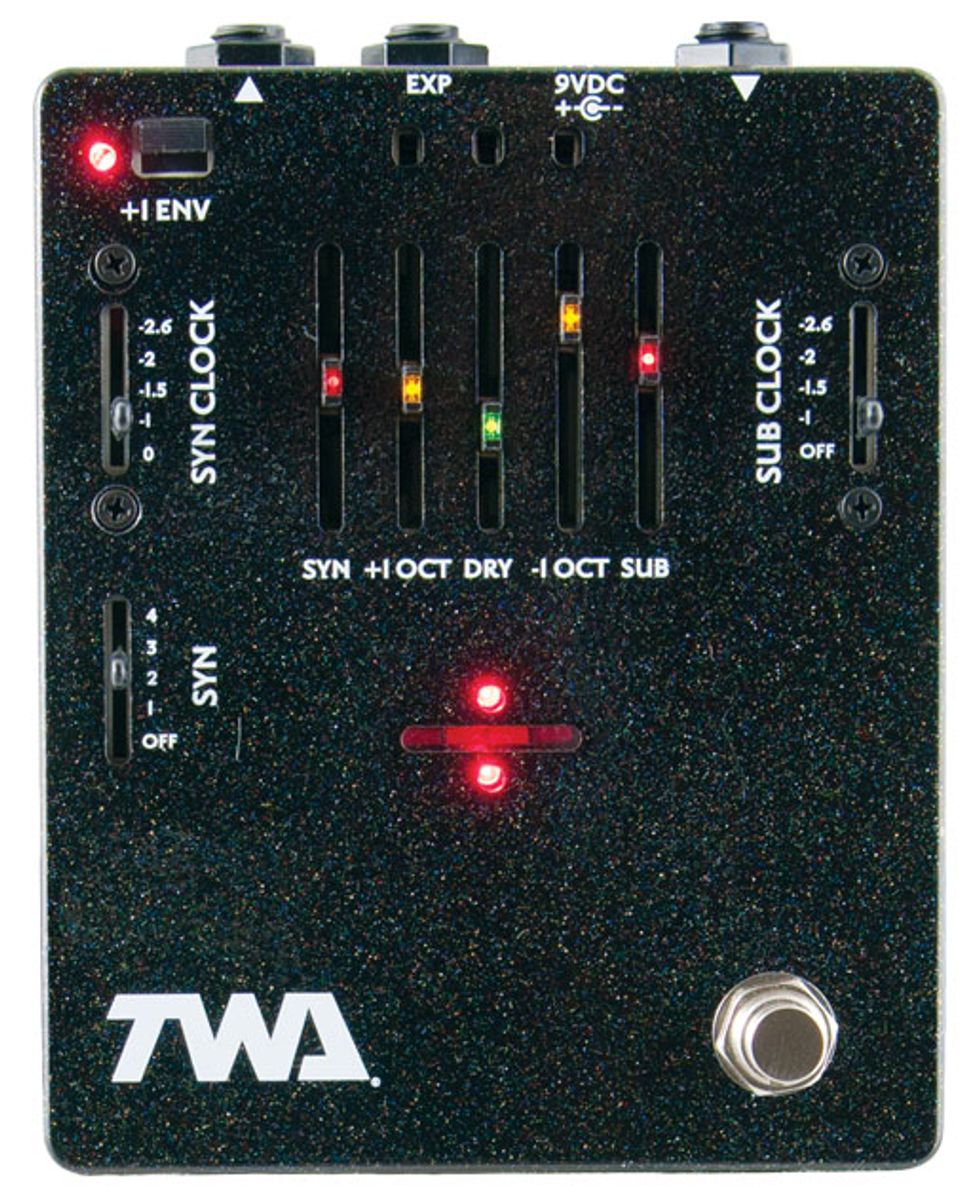








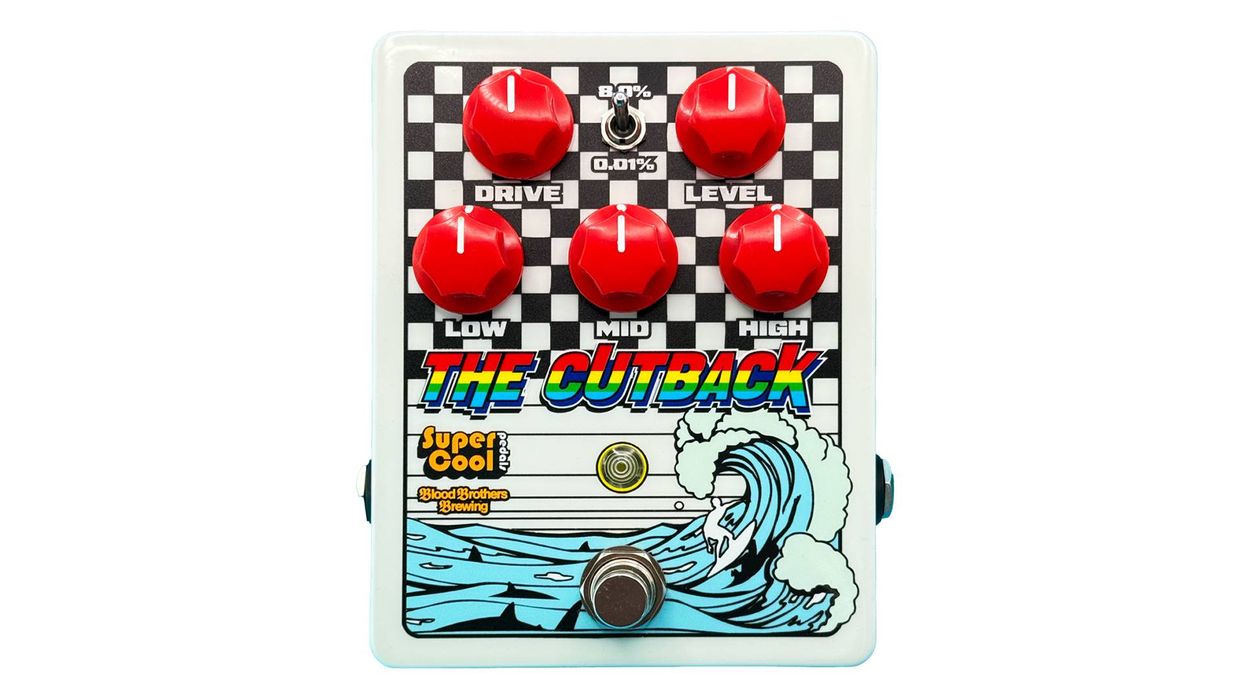

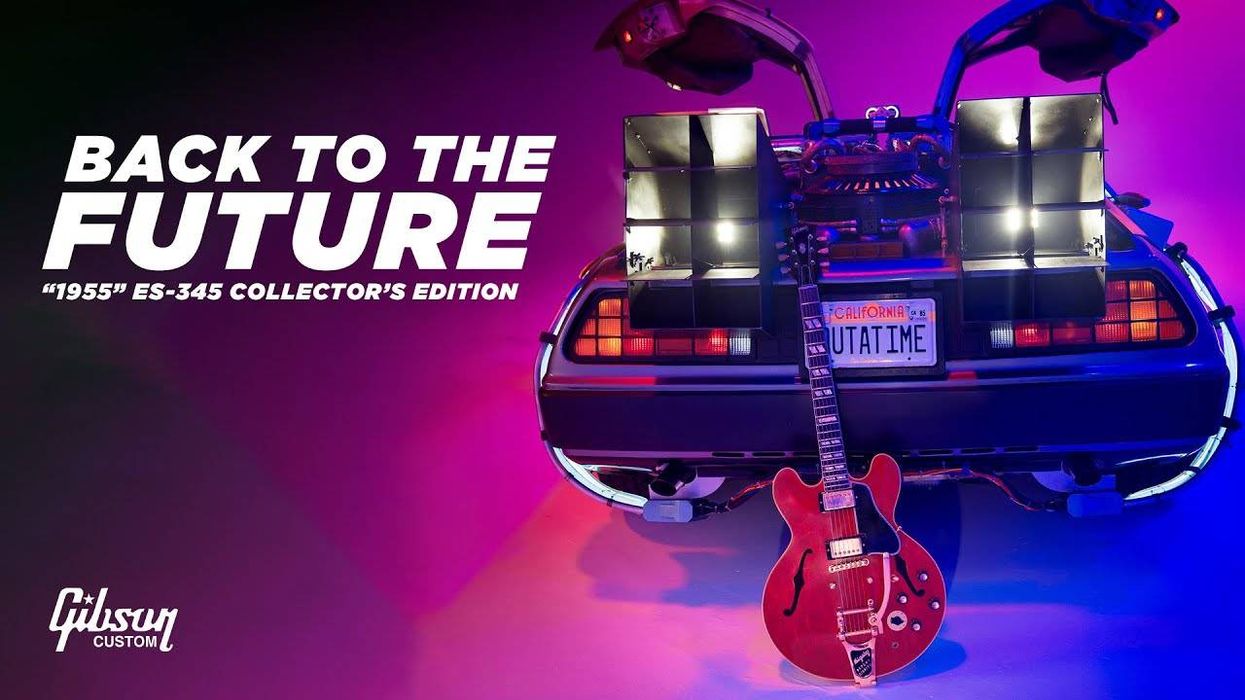
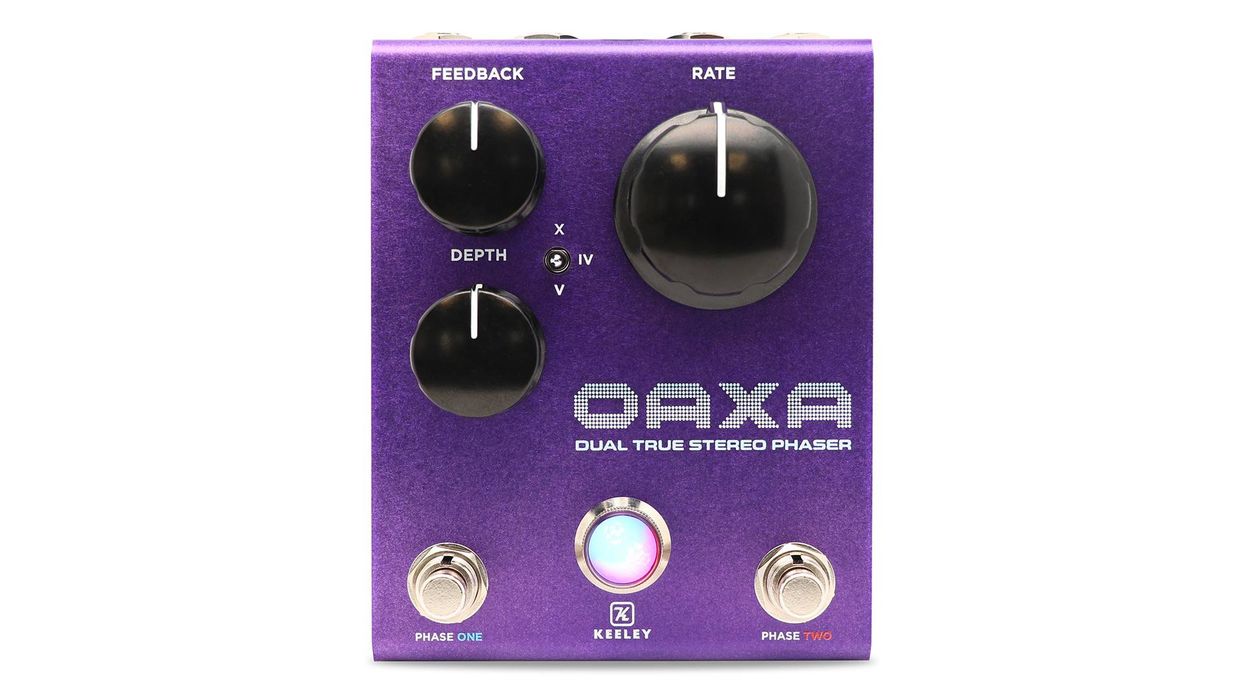
![Devon Eisenbarger [Katy Perry] Rig Rundown](https://www.premierguitar.com/media-library/youtube.jpg?id=61774583&width=1245&height=700&quality=70&coordinates=0%2C0%2C0%2C0)








